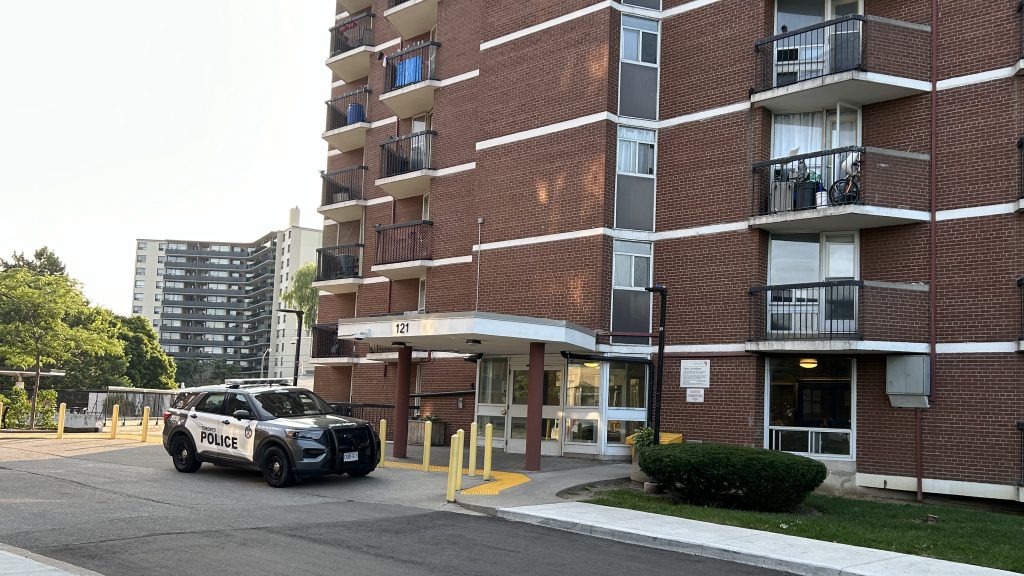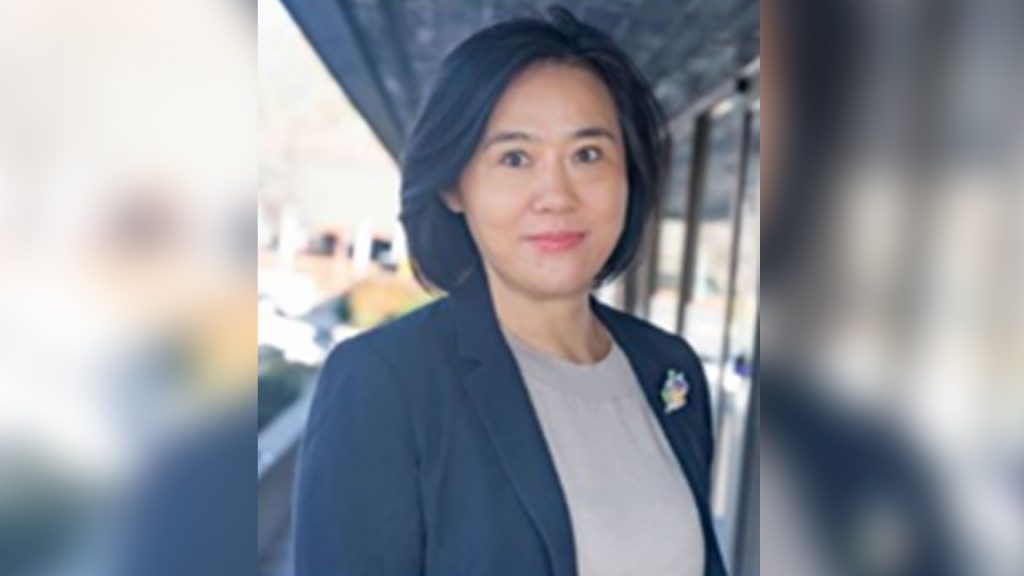Local association in Jane and Finch opening new centre to address roots of youth violence
Posted March 31, 2023 11:27 am.
Last Updated April 11, 2023 12:48 pm.
A new centre opening in the Jane and Finch area is taking a holistic, community-driven approach to addressing youth violence in the city.
The Youth Association for Academics, Athletics and Character Education (YAAACE) has served the Jane and Finch community for 16 years with a range of services, including community outreach, civic engagement and family support, among others. In about a month, it’s launching what it hopes will become a national hub for youth violence prevention and intervention: the Centre for Community Safety and Roots of Violence.
“We feel there’s nothing out there to mobilize that ecosystem across the different institutions and sectors to work together,” Ardavan Eizadirad, executive director of YAAACE, said on the lack of national strategy. “Particularly from a preventative lens that looks at culturally reflective services.”
He added that discussions around youth violence are treated like reruns. When high profile cases happen over a short period of time, “kind of like the current state we’re in, it receives a lot of attention,” he told The Green Line, “but then it cools down. So we actually don’t get to address those root causes which is why this cycle repeats.”
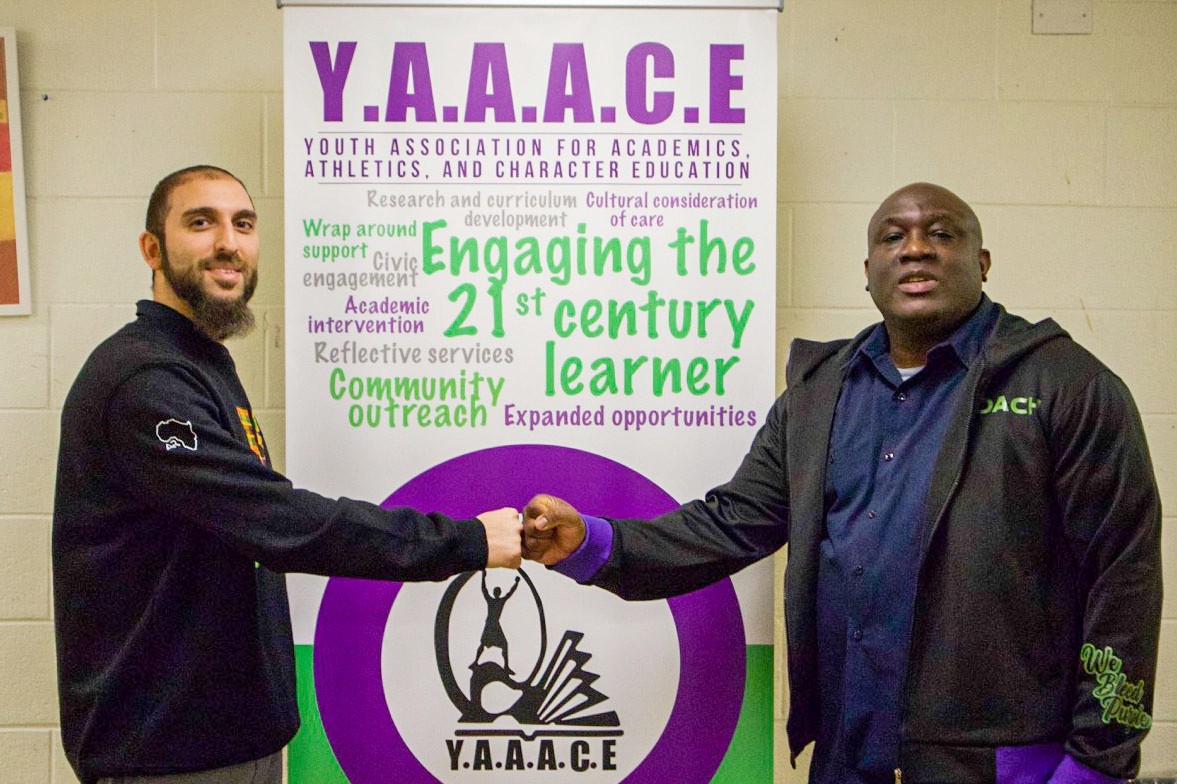
Youth Association for Academics, Athletics and Character Education’s (YAAACE) executive director Ardavan Eizadirad (left) with coach and co-founder Devon Jones (right) on March 24, 2023. Credit: Camilla Faragalli
Toronto police data presented in December 2022 at a Toronto District School Board planning and priorities committee meeting showed 622 young people between the ages of 12 and 29 were victims of stabbings, and 586 were accused of stabbings between January 2021 and November 2022.
The City of Toronto reported that most victims of police-reported community violence between 2013 and 2017 were boys and young men. Last year, then-deputy chief of police Myron Demkiw said the average age of those linked to gun violence in Toronto between 2015 and 2020 was 25, but that average dropped to 20 years of age in 2021.
Recent data from Statistics Canada also showed that youth are the primary age group across the country in which firearm-related offences occur.
YAAACE’s solution to address youth violence involves looking at a combination of underlying risk factors that increase the likelihood of an individual becoming a perpetrator or victim of violence – known as the public health approach. In other words, identifying and addressing gaps in policies as well as social and systemic barriers or inequities.
“Being sick is not simply whether you’re coughing or not. It’s how fast you can see a specialist. Can you see a doctor of the same gender or sexuality? So it’s the same logic applied,” Eizadirad said, adding that risk factors can be present at both individual and institutional levels.
“For example, if somebody can’t afford food and they don’t have any income, they’re going to get to the point of maybe saying, ‘I’m going to steal or rob someone to get money so that I can buy food,’” he continued. “In contrast, protective factors try to deter [that]. So now if they are able to access a food program … they can talk about their immediate needs.”
The next step becomes developing prevention and intervention methods that are culturally relevant, accessible and affordable in conjunction with professionals from the education, justice and healthcare sectors, to name a few.
“[While] particularly recognizing that Black, Indigenous and people of colour are overrepresented in the justice system,” Eizadirad said, “whether the perpetrators of violence or being the victims.”
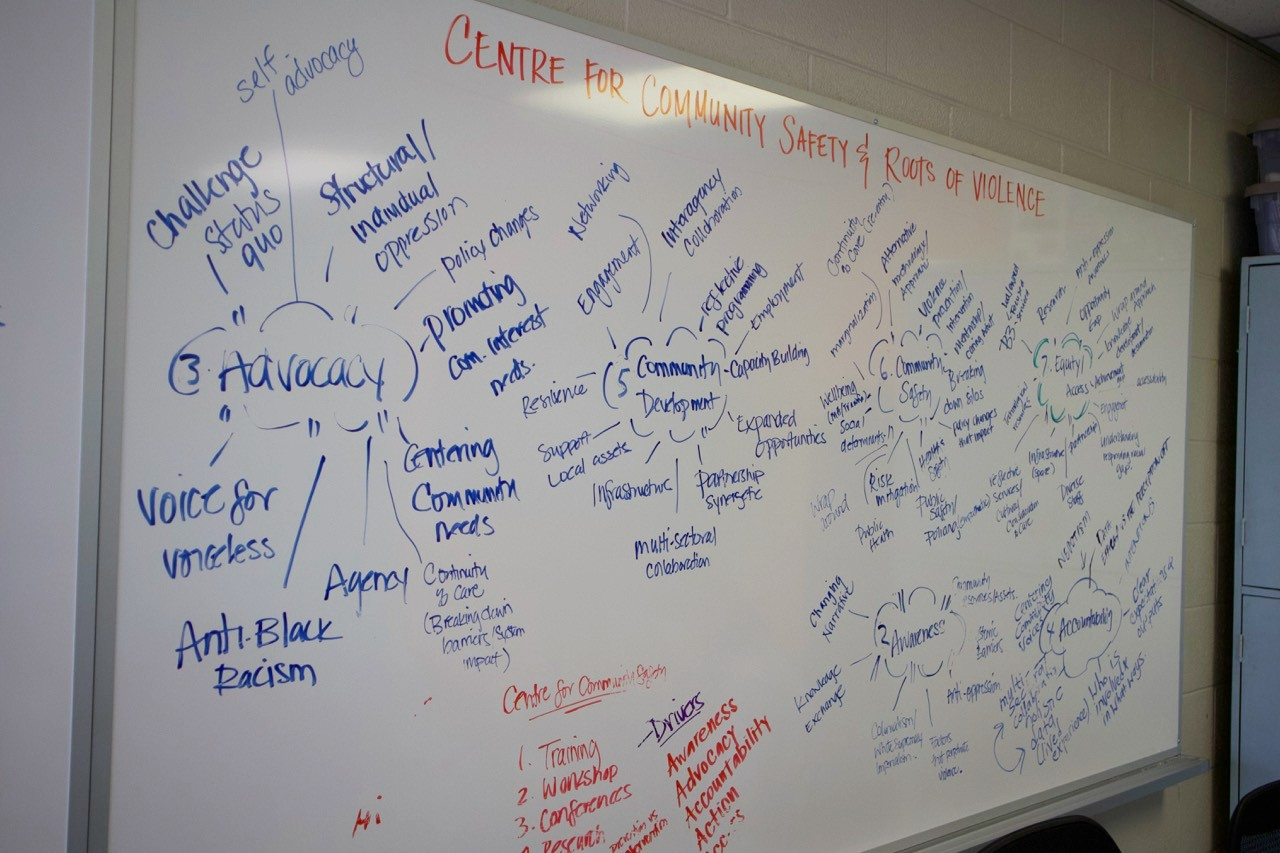
YAAACE’s vision board for the Centre for Community Safety and Roots of Violence, taken on March 24, 2023. Credit: Camilla Faragalli
YAAACE’s holistic approach to supporting youth and the community is already reflected in its other programs since its inception in 2007.
Yaw Obeng-Mensah, now a varsity basketball player, is an alumnus of YAAACE’s athletics program who says he wasn’t invested in sports as a youth because he felt nobody believed in him.
“YAAACE was the program that just believed in me and just told me that I could go far in basketball and that’s why I’m here right now,” said Obeng-Mensah.
Kurtis Burton, who attended YAAACE’s summer camps as a kid and received academic support, is now working for the association as director of IT and technology. Through mentors, Burton said he learned that “tough times don’t last but tough people do” and to “be comfortable while being uncomfortable … [since] you’re going to be in a bunch of different situations [in life] where you have to learn how to deal with it.”
Dejon Brissett, wide receiver for the Toronto Argonauts and a motivational speaker, is also an alumnus of the athletics program. He credits the association for building his work ethic and mindset as a youth – two key factors that helped him thrive.
“As much as basketball was the focus … we were playing math games on the computer. We were going to zoos,” he said. “At the time it just seemed normal to us … We had cooked food every day. And just people who looked like me were teaching me and mentoring me.”
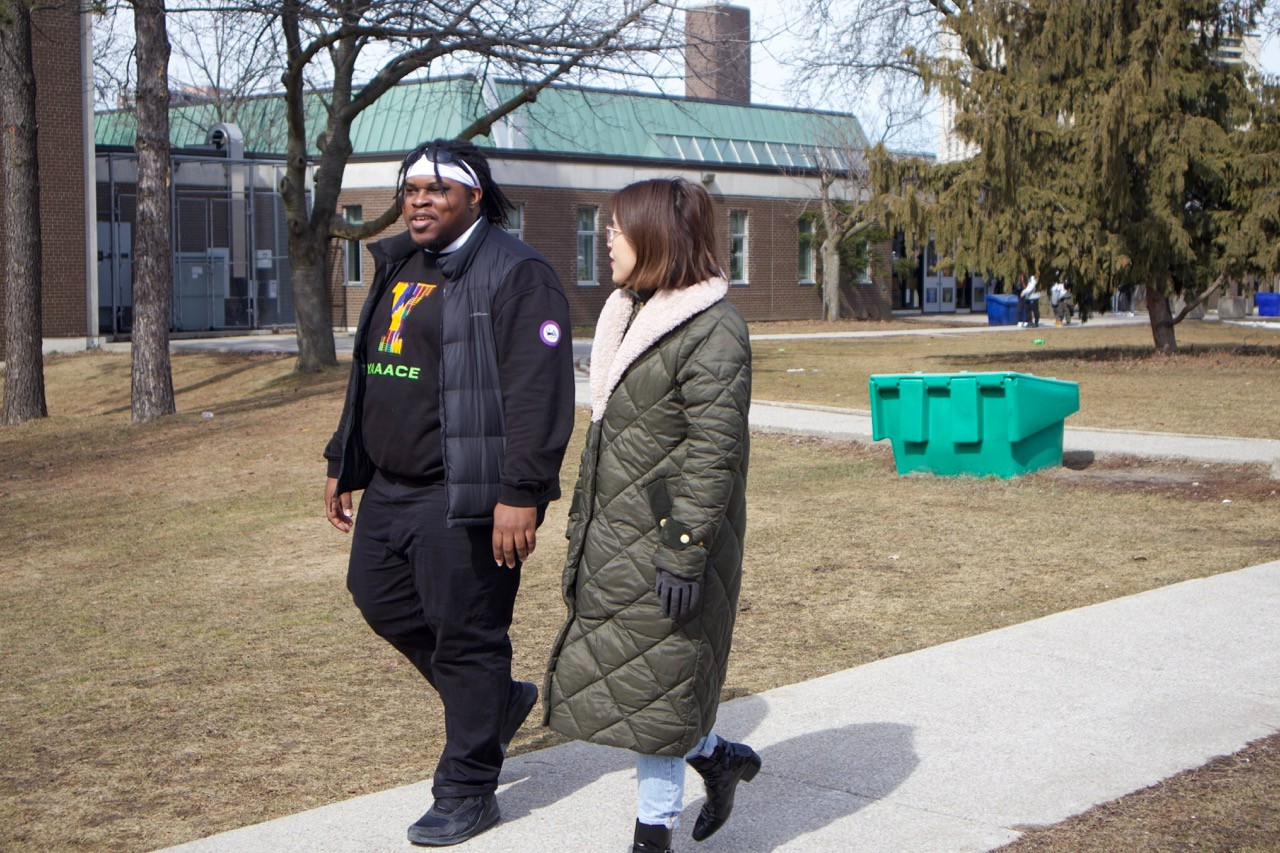
Kurtis Burton (left) and Anita Li (right) in front of C.W. Jefferys Collegiate Institute on March 24, 2023. Credit: Camilla Faragalli
Brissett said he knows people “who are going through troubles right now” but that it ultimately “comes down to decision making and guidance … because you can’t blame a person for doing what they know.”
Another YAAACE alum, who wishes to remain anonymous, was formerly incarcerated but said they received a second chance thanks to the association once they returned to their neighbourhood.
“When I was 18, I was a functionally illiterate homeless child who was looking down the barrel of a life sentence. Now I’m finishing up my undergrad and heading to law school,” they told The Green Line.
They added that they wish they found YAAACE when they were younger. “A place … that’ll give you support to take care of the day-to-day so you could lift your head up from the weeds a little bit and take a look at the field.”
To launch the Centre for Community Safety and Roots of Violence, YAAACE is working with the Toronto District School Board and several other Ontario ministries. This includes, but is not limited to, the Ministry of Community, Children and Social Services as well as the Ministry of the Solicitor General.
Among others in its advisory coalition, YAAACE is consulting Tanya Sharpe, a professor of social work at the University of Toronto and founder of the Centre for Research & Innovation for Black Survivors of Homicide Victims (The CRIB). Sharpe said she hopes the new centre’s work will also help tackle stereotypes that racialized youth are inherently angry or prone to violence.
“Where is the anger coming from? Well, it’s coming from structural inequities, the disproportionate reality of experiencing unequal educational opportunities, employment opportunities, inadequate housing opportunities, being over-surveillanced,” Sharpe explained.
“[People are] saying, ‘What’s wrong with you?’ versus ‘What happened to you?'”
The anonymous alum echoed Sharpe’s sentiments by adding that most people “don’t understand what’s going on behind the curtain.” They said “a lot of these kids are just blowing in the wind…and subjected to abuse from all lenses like police abuse, abusive schools, neglect, poverty. Some kids don’t have reliable access to [food].”
That’s why Eizadirad said solutions and insights have to come from the community, because they’re on the frontlines.
“It can’t be a top-down approach, which is what historically has been the case … It has to be bottom-up,” he said. “[You] have to talk to folks who have those lived experiences and who are impacted by the issues directly.”
Sharpe said that is the reason she and The CRIB wanted to be a part of the initiative: “to provide [youth] with connection, support, and opportunities to release anger, grief and loss that they may feel as a result of experiencing both direct violent victimization as well as indirect.”
